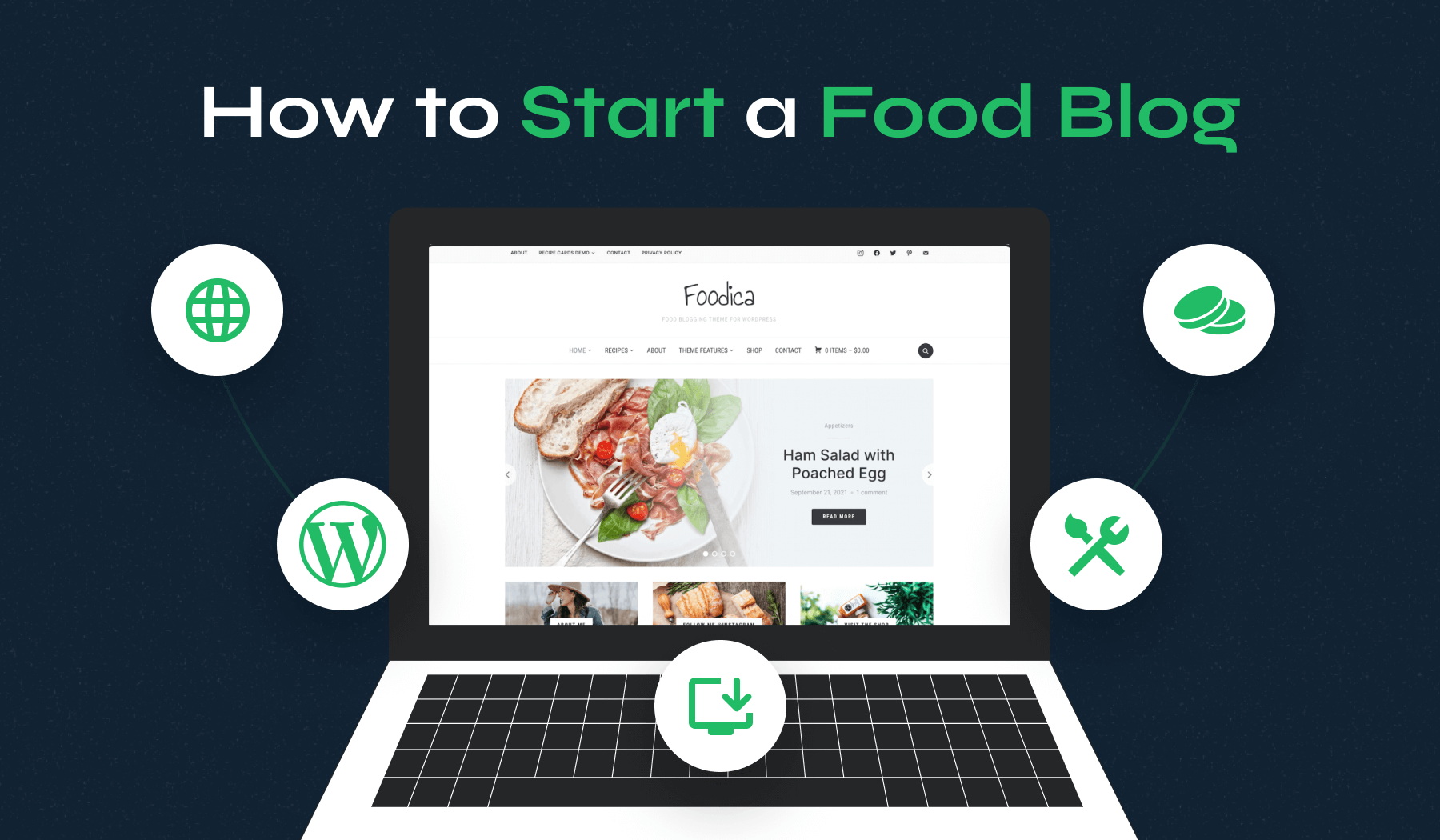
So, you’re curious about how to start a food blog? That’s fantastic! Starting a food blog can be incredibly rewarding. You get to express your passion for food, connect with fellow food enthusiasts, build a community, and even earn some money along the way!
In this guide, we’ll walk you through every step of how to start a cooking blog, from finding your unique niche and crafting a catchy name to setting up your blog on WordPress and creating irresistible content. We’ll break it all down into simple, manageable steps so you can start your blogging journey with confidence and excitement.
Ready to get started? Let’s make your food blogging dreams a reality!
Quick Guide to Starting a Food Blog
Here’s a quick summary of the critical steps involved in creating a food blog:
- Step 1: Discover Your Niche in the Food Blogging World
- Step 2: Craft a Memorable Name and Secure Your Domain
- Step 3: Select a Reliable Hosting Provider
- Step 4: Install WordPress for Your Blog
- Step 5: Choose the Perfect Theme for Your Food Blog
- Step 6: Integrate a Recipe Plugin to Enhance Your Posts
- Step 7: Plan and Create Engaging Content
- Step 8: Leverage Social Media and Other Platforms for Growth
- Step 9: Monetize Your Passion and Earn from Your Blog
- Step 10: Use Analytics to Understand and Improve Your Blog
Now, let’s explore each aspect in more detail to ensure you’re well-equipped to start a food blog successfully.
How to Start a Food Blog: A Detailed Guide
Starting a food blog is an exciting journey, but turning it into a successful venture takes time, effort, and a bit of know-how. We’ve broken down the essentials into 10 manageable steps to help you build a solid foundation for your blog.
1. Discover Your Niche in the Food Blogging World
Finding the right niche is the secret ingredient to standing out in the bustling world of food blogging. Think of your niche as your blog’s unique flavor – it’s what makes you different and keeps readers coming back for more. But how do you find the perfect niche? Let’s explore some tips to help you pinpoint your unique spot in the culinary world.
- Personal Passions: Start with what you love. Are you passionate about vegan baking, ethnic cuisines, quick and easy meals, or maybe decadent desserts? Your personal interests and expertise are the best guides to finding a niche that you’ll enjoy writing about consistently.
- Market Gaps: Look for areas that are underserved in the food blogging world. Maybe there aren’t many blogs focusing on gluten-free comfort food or fusion recipes. Identifying these gaps can help you carve out a space where your blog can shine.
- Audience Appeal: Think about who you want to reach. Are you aiming to help busy parents make quick, nutritious dinners? Or maybe you want to guide health-conscious readers through the world of plant-based eating? Understanding your target audience will help you tailor your content to their needs and preferences.
Remember, your niche should be something you’re passionate about and excited to share with the world. It’s what will set your blog apart and attract a loyal following. So take some time to reflect on what makes your culinary perspective unique, and let that guide you as you start your food blogging journey.
2. Craft a Memorable Name and Secure Your Domain
Choosing the perfect name for your food blog is like picking the right spice – it adds flavor and makes everything come together! Your blog’s name should be catchy, easy to remember, and reflect your unique niche.
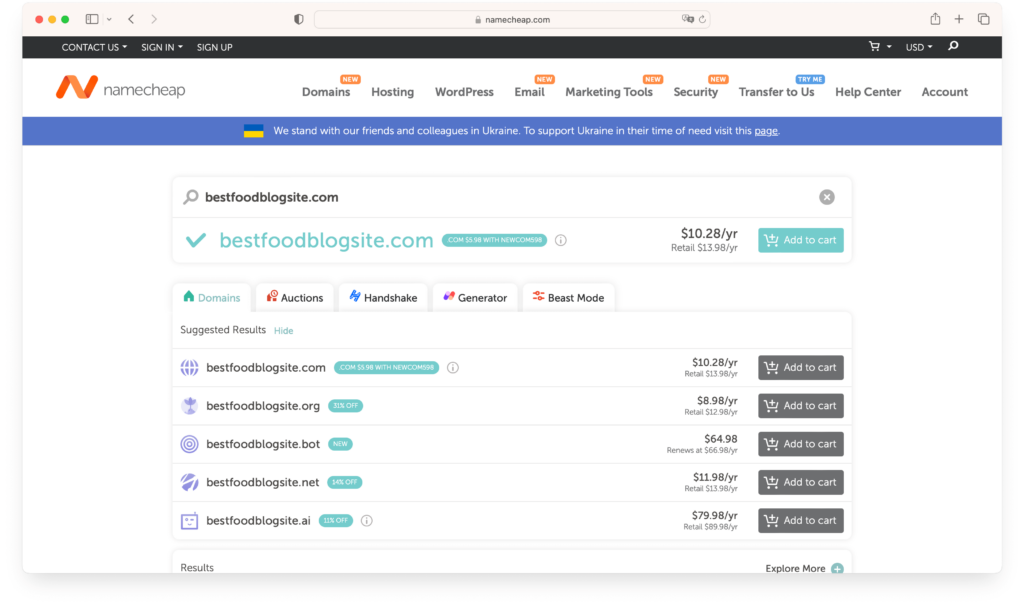
Let’s go through some tips to help you craft a memorable name and secure your domain.
- Keep It Short and Sweet: Aim for a name that’s concise and easy to remember. The shorter your blog name, the easier it will be for people to type and recall.
- Make It Easy to Spell: You want your readers to find you without any hassle. Avoid complicated words or unusual spellings that might confuse people.
- Reflect Your Niche: Your blog name should give a hint about what your blog is all about. Whether it’s “Vegan Delights” or “Quick Bites,” make sure it aligns with your content and niche.
- Be Unique and Original: Stand out from the crowd with a name that’s distinctive. A unique name will help you leave a lasting impression and avoid confusion with other blogs.
- Check Availability: Before you get too attached to your chosen name, make sure it’s available as a domain. You can use tools like Domainr and Namechk to check if your desired name is free across various platforms.
Now that you’ve got a fantastic name, it’s time to claim your spot on the internet by securing your domain! Choose a reliable domain registrar. Websites like GoDaddy, Namecheap, or even your hosting provider (like SiteGround) can help you register your domain. Opt for a .com. While there are many domain extensions available, a .com is still the most popular and easiest for people to remember.
With a memorable name and your domain secured, you’re ready to move on to the next exciting step in your food blogging journey.
3. Select a Reliable Hosting Provider
Choosing the right hosting provider is like finding a reliable kitchen – you need a solid foundation to create something amazing! Your hosting provider is where your blog will live online, so it’s important to pick one that’s dependable and meets your needs.
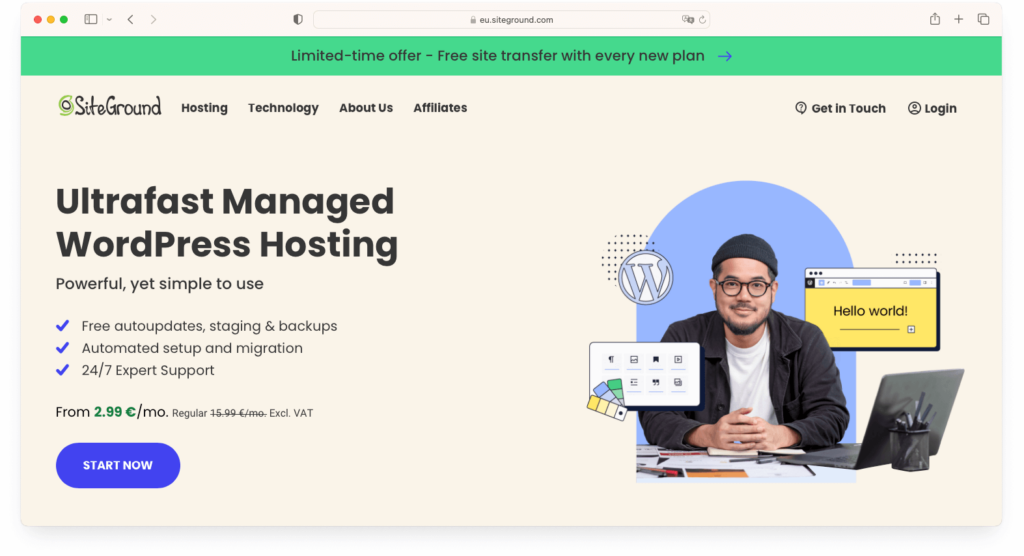
Let’s break down the essentials to help you make the best choice:
- Reliability and Uptime: You want your blog to be available to readers 24/7, so look for a hosting provider with a strong reputation for reliability and high uptime. This ensures your site won’t experience frequent downtimes.
- Speed and Performance: A fast website keeps readers happy and improves your SEO. Choose a hosting provider known for good performance and speed to ensure your blog loads quickly.
- Customer Support: When you run into issues (and you will at some point!), having a responsive and helpful support team is crucial. Look for providers that offer 24/7 customer support through various channels like live chat, email, and phone.
- Ease of Use: As a new blogger, you’ll want a hosting provider that’s easy to navigate, even if you’re not a tech expert. Many hosts offer one-click WordPress installations, making it simple to get started.
- Scalability: As your blog grows, your hosting needs might change. Choose a provider that offers scalable solutions, so you can upgrade your plan as your traffic increases.
Now that you’ve chosen a reliable hosting provider, it’s time to set up the heart of your food blog – WordPress!
4. Install WordPress for Your Blog
WordPress is the most popular content management system (CMS) out there, and for good reasons:
- User-Friendly: It’s easy to use, even for beginners. You don’t need to know any coding to get started.
- Flexible: With thousands of themes and plugins, you can customize your blog to look and function exactly how you want.
- Supportive Community: There’s a huge community of users and developers who can help you with any questions or issues.
Installing WordPress is a piece of cake, even if you’re not tech-savvy. Let’s walk through the process together:
- Log in to Your Hosting Account: Start by logging into the account you created with your hosting provider.
- Find the WordPress Installer: Most hosting providers offer a one-click WordPress installation option. Look for it in your hosting dashboard. It might be under sections like “Website” or “Control Panel”.
- Launch the Installer: Click on the WordPress installer and follow the prompts. You’ll need to provide some basic information, such as your blog’s name, username, and password. Choose a username and password that are secure – you’ll use these to log into your WordPress dashboard.
- Configure Your Settings: Once WordPress is installed, you’ll be prompted to configure some basic settings.
- Start Exploring: Take some time to explore your new dashboard. Familiarize yourself with the layout, including where to create new posts, add media, and manage your site’s appearance.
It’s time to give it some style with a beautiful theme!
5. Choose the Perfect Theme for Your Food Blog
A well-chosen theme enhances your blog’s aesthetics, ensures a great user experience, and helps you stand out in the crowded food blogging world. It sets the tone for your content and can even affect your blog’s performance and SEO.
Tips for Choosing the Perfect Theme
- Focus on Functionality: Look for themes designed specifically for food blogs. These themes often come with built-in recipe layouts, easy-to-use photo galleries, and other features that make it simple to share your culinary creations.
- Responsive Design: Make sure your theme looks great on all devices, from desktops to smartphones. A responsive design ensures your readers have a seamless experience no matter how they access your blog.
- Customization Options: Choose a theme that offers customization options so you can tweak colors, fonts, and layouts to match your brand. You want your blog to reflect your unique style and personality.
- SEO-Friendly: An SEO-friendly theme helps your blog rank higher in search engine results, making it easier for people to find your delicious content.
- Speed and Performance: A fast-loading theme improves user experience and keeps readers on your site longer. Avoid themes that are overly complicated or bloated with unnecessary features.

Recommended Themes for Food Bloggers
- Foodica PRO: This theme is packed with features tailored for food bloggers, including recipe shortcodes, beautiful sliders, and multiple layout options.
- Foodie Blocks: Known for its clean design and flexibility, Foodie Blocks is perfect for bloggers who want a minimalist look with plenty of customization options.
- Cookely: This theme offers a sleek design and great features like recipe cards and meal planners, making it easy to organize and share your recipes.
- Gourmand: With its elegant design and user-friendly interface, Gourmand is ideal for food bloggers who want a sophisticated look without sacrificing functionality.
- CookBook: This theme includes a robust recipe card feature, easy navigation, and a clean, appetizing design that highlights your culinary creations beautifully.
Choosing the right theme is a fun and exciting part of creating your food blog. It’s your chance to showcase your personality and make a great first impression on your readers.
6. Integrate a Recipe Plugin to Enhance Your Posts
Recipe plugins help you present your recipes in a visually appealing and easy-to-follow format, making it simple for your readers to recreate your delicious dishes. They make your recipes look professional and often include features like ingredient lists, step-by-step instructions, nutrition facts, and even user ratings. Plus, they help with SEO by adding structured data that search engines love.
Our top recommendation is, without question, Recipe Card Blocks.

It integrates seamlessly with the WordPress Block Editor and Elementor, making it incredibly user-friendly. Recipe Card Blocks offers multiple styles, allowing you to customize the look and feel of your recipes to match your blog’s aesthetic. It also includes schema markup, which helps your recipes rank better in search engines. Additional features like easy recipe input, nutrition facts, and print options make this plugin a comprehensive tool for any food blogger.
7. Plan and Create Engaging Content
Creating engaging content is the heart and soul of your food blog. It’s where your passion for food shines and where you connect with your audience. Great content keeps readers coming back for more and helps build a loyal following. Engaging posts not only attract readers but also encourage them to share your content, boosting your blog’s visibility and growth.
Tips for Planning Your Content
- Create a Content Calendar: A content calendar helps you stay organized and consistent. Plan out your posts in advance, including topics, recipes, and any special features. This ensures you always have fresh content ready to go.
- Mix It Up: Variety keeps things interesting. Alongside recipes, consider including how-to guides, personal stories, restaurant reviews, or product reviews. This keeps your content diverse and appealing to a broader audience.
- Focus on Quality: Invest time in creating high-quality content. This means well-written posts, beautiful photos, and reliable recipes. Quality content builds trust and keeps readers coming back.
- Be Consistent: Consistency is key to building a loyal audience. Whether you post once a week or twice a month, stick to your schedule. Regular updates keep your readers engaged and looking forward to your next post.
Creating Engaging Posts
- Write Compelling Titles: Your title is the first thing readers see, so make it catchy and informative. A great title grabs attention and entices readers to click.
- Tell a Story: People love stories. Share the story behind your recipe, a personal anecdote, or a cooking tip. This makes your posts more relatable and engaging.
- Use High-Quality Photos: A picture is worth a thousand words, especially with food. Use bright, clear photos that showcase your dishes beautifully. Consider investing in a good camera or learning basic food photography skills.
- Provide Detailed Instructions: Make your recipes easy to follow with clear, step-by-step instructions. Include tips and tricks to help your readers succeed in recreating your dishes.
- Optimize for SEO: Use relevant keywords to help your posts rank higher in search engine results. This helps more people find your blog. Tools like Yoast SEO can be very helpful.
- Engage with Your Readers: Encourage comments, ask questions, and respond to feedback. Engaging with your audience builds a community and makes your blog more interactive.
Creating engaging content is an ongoing process, but with passion and dedication, your food blog will become a delicious destination for your readers.
8. Leverage Social Media and Other Platforms for Growth
Social media is a powerful tool for growing your food blog. It’s like the megaphone for your kitchen, helping you reach a wider audience and build a community of food enthusiasts.
Social media platforms allow you to share your content, interact with your audience, and drive traffic to your blog. They’re also fantastic for building your brand and connecting with other bloggers and influencers.
Tips for Social Media Success
- Choose the Right Platforms: Focus on the social media platforms where your audience is most active. Instagram, Pinterest, and Facebook are popular choices for food bloggers due to their visual nature and large user base.
- Create Eye-Catching Visuals: High-quality images and videos are key to grabbing attention on social media. Use bright, appetizing photos of your dishes, and consider creating short cooking videos or reels to showcase your recipes.
- Be Consistent: Regular posting keeps your audience engaged and helps you stay top-of-mind. Create a social media calendar to plan your posts and ensure you’re consistently sharing new content.
- Engage with Your Audience: Social media is all about interaction. Respond to comments, like and share posts from your followers, and participate in relevant discussions. This builds a sense of community and loyalty among your audience.
- Leverage Stories and Live Videos: Instagram Stories, Facebook Stories, and live videos are great for sharing behind-the-scenes content, quick tips, and real-time interactions with your audience. These formats are engaging and help you connect on a more personal level.
Maximizing Other Platforms
- YouTube: If you enjoy creating videos, YouTube is an excellent platform for sharing cooking tutorials, recipe videos, and kitchen tips. High-quality videos can attract a large audience and drive traffic to your blog.
- Email Newsletters: Build an email list to stay connected with your audience. Send regular newsletters with updates, exclusive content, and links to your latest blog posts. Tools like Mailchimp and ConvertKit make it easy to manage your email marketing.
- Collaborate with Influencers: Partnering with other bloggers and influencers can expand your reach. Look for collaboration opportunities such as guest posts, joint giveaways, or social media takeovers.
- Participate in Online Communities: Join food-related forums, Facebook groups, and Reddit communities. Share your expertise, answer questions, and subtly promote your blog. Being an active member of these communities can help you build relationships and drive traffic to your site.
WPZOOM offers specialized social media tools to enhance social media integration:
- Social Icons Widget: A simple yet powerful tool for adding social media icons to your website, linking directly to your profiles.
- Instagram Widget: It allows you to display your latest Instagram posts directly on your website.
9. Monetize Your Passion and Earn from Your Blog
Turning your passion for food into a source of income is a dream come true for many food bloggers. The good news is, there are numerous ways to monetize your food blog and start earning from your culinary creations.
Let’s explore some of the most effective strategies to help you make money from your food blog.
- Display Ads: One of the easiest ways to start making money is by displaying ads on your blog. Networks like Google AdSense, Mediavine, and AdThrive connect you with advertisers and handle the logistics. The more traffic you have, the more you can earn from ads.
- Affiliate Marketing: Promote products you love and earn a commission for every sale made through your affiliate links. Join affiliate programs related to your niche, such as kitchen gadgets, cooking ingredients, or online cooking courses. Amazon Associates is a popular choice due to its vast product range.
- Sponsored Content: Partner with brands to create sponsored posts. This can include recipe development, product reviews, or social media posts featuring their products. Make sure to choose brands that align with your blog’s values and interests.
- Sell Digital Products: Create and sell digital products like e-cookbooks, meal plans, or cooking guides. These products can be a great source of passive income, as you create them once and sell them repeatedly.
- Offer Online Cooking Classes: If you enjoy teaching, consider offering online cooking classes or workshops. Platforms like Teachable and Udemy make it easy to create and sell courses. Live classes on Zoom or other video conferencing tools can also be a hit.
- Membership Sites and Subscriptions: Offer exclusive content to paying subscribers. This could be in the form of a membership site where users get access to premium recipes, meal plans, and cooking tips. Patreon is a popular platform for this model.
Monetizing your food blog is a journey that requires patience and persistence. By combining passion with smart strategies, you can turn your love for food into a rewarding and profitable venture.
10. Use Analytics to Understand and Improve Your Blog
Creating a successful food blog isn’t just about delicious recipes and beautiful photos; it’s also about understanding your audience and continuously improving your content. Analytics tools give you valuable insights into your readers’ preferences and behaviors, helping you tailor your blog to better meet their needs.

Analytics help you see what’s working and what’s not. By understanding which posts are popular, how readers find your blog, and what keeps them engaged, you can make informed decisions to enhance your content strategy and grow your audience.
Key Analytics Tools
- Google Analytics: This free tool is a must-have for any blogger. It provides detailed insights into your blog’s traffic, including where your visitors come from, which pages they visit, and how long they stay. Setting up Google Analytics is straightforward and the data you get is invaluable.
- Google Search Console: Another free tool from Google, Search Console helps you understand how your blog performs in search results. It shows you which keywords bring visitors to your site and identifies any issues that might affect your SEO.
By continuously monitoring and adapting based on your insights, you’ll create a blog that truly resonates with your readers and keeps them coming back for more.
Bottom Line
Starting a food blog is an exciting journey, filled with creativity, delicious recipes, and the opportunity to connect with fellow food enthusiasts. While it might seem overwhelming at first, remember that every successful food blog started with just a single post. You have the passion and the tools to make it happen, and this guide is here to help you every step of the way.
The journey of creating a successful food blog doesn’t happen overnight. It takes dedication, creativity, and a willingness to learn and adapt. Celebrate every small victory, whether it’s your first comment, your first hundred views, or your first collaboration with a brand. Each step brings you closer to your goals.
Stay true to your passion for food, keep experimenting in the kitchen, and continue sharing your unique culinary creations with the world. The most important thing is to enjoy the process and have fun with it. Your enthusiasm will shine through and inspire others to join you on your food blogging adventure.
So, roll up your sleeves, grab your apron, and start blogging! Your delicious journey awaits. Happy blogging and bon appétit!
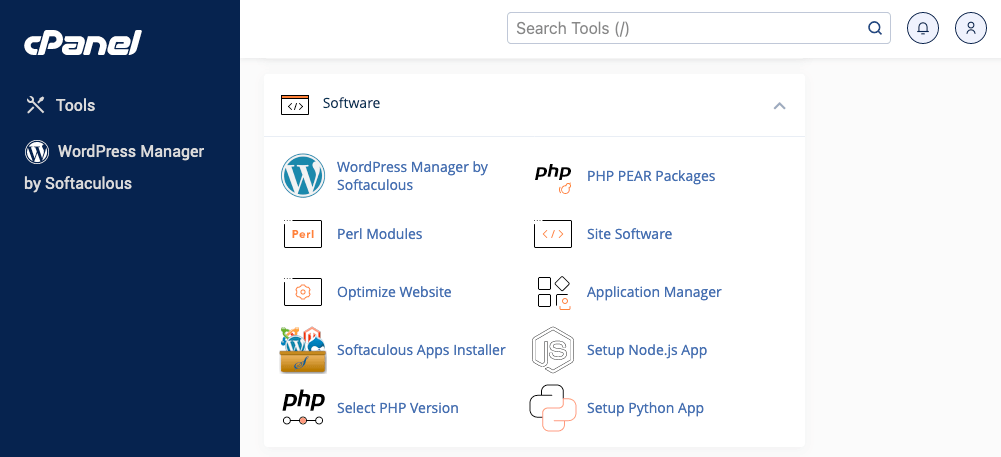

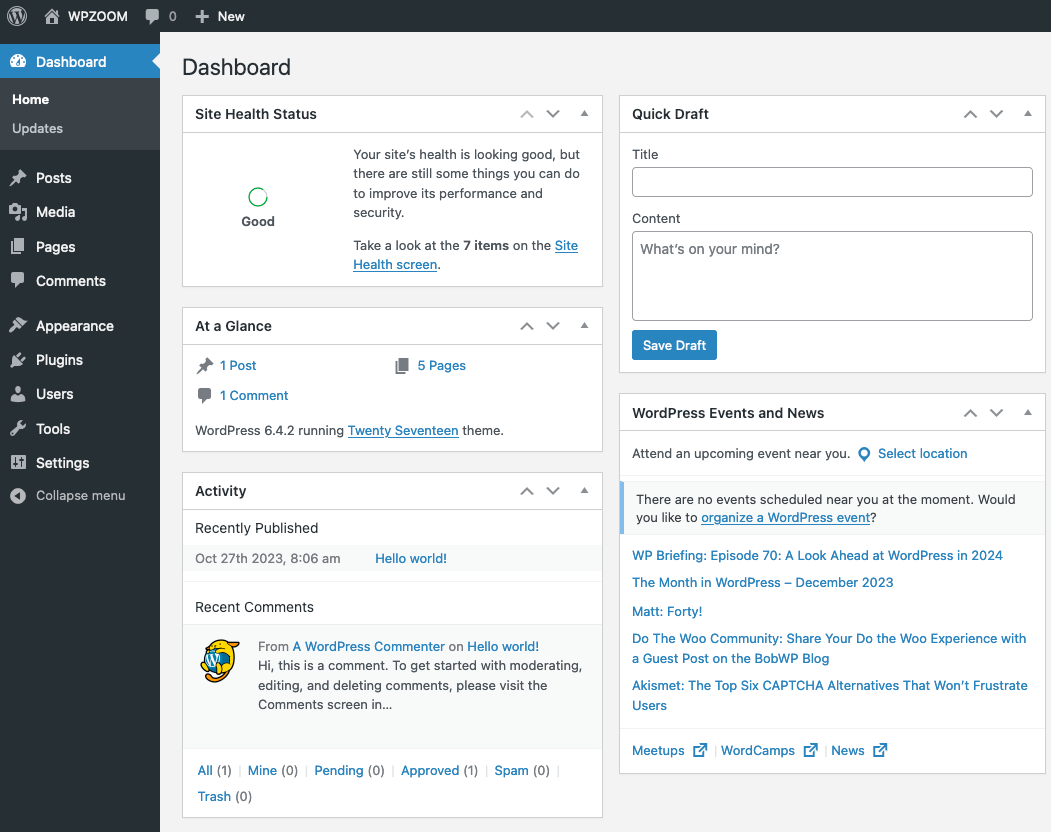

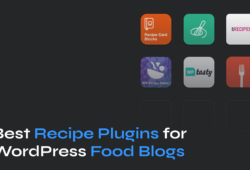

January 15, 2023 7:11 pm
Good afternoon,
Does your company assist with creating a website for WordPress? Or am I only purchasing themes and plugins?
Pebbles
April 13, 2023 9:25 am
Pebbles,
We can only assist you with services like installing WordPress and our themes on your website.
https://www.wpzoom.com/wordpress-services/